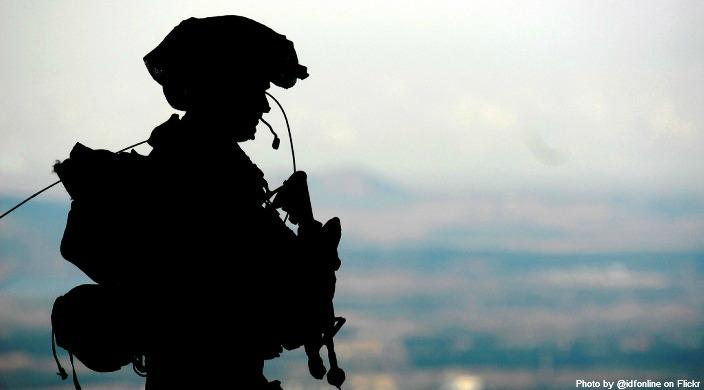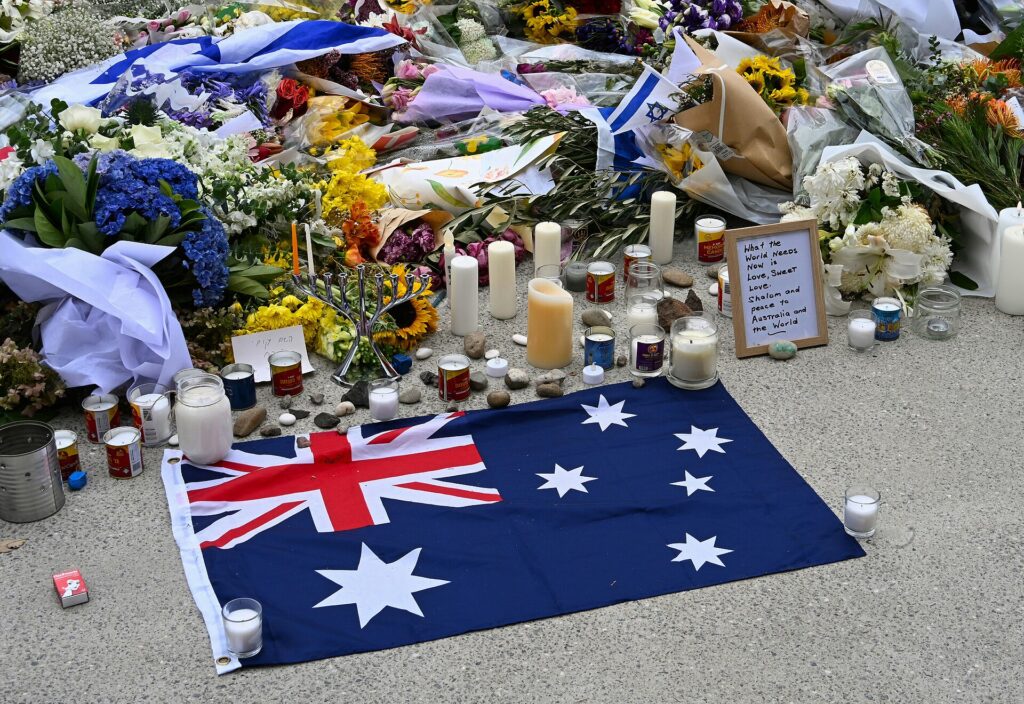UPDATES
B’Tselem’s report on “Operation Protective Edge” criticised for omissions and contradictions
February 5, 2015 | Sharyn Mittelman

Last week Israeli human rights organisation B’Tselem released a report, “Black Flag: The legal and moral implications of the policy of attacking residential buildings in the Gaza Strip, summer 2014”, that claimed that in some cases Israel violated international humanitarian law during “Operation Protective Edge”. The report’s findings were widely circulated including in Australia, with Ruth Pollard reporting on it in Fairfax newspapers.
Israel also reviews its military’s actions following a conflict, and is currently undertaking an investigation into several incidents that occurred during the war. However, B’Tselem’s report has been criticised for omissions and contradictions by Israeli watchdog NGO Monitor and others.
NGO Monitor has written a stinging critique of the report titled “Emotion not law: A critical reading of B’Tselem’s Black Flag report” (see here) commenting:
“B’Tselem’s claims regarding international law are marked by major omissions and distortions. It notably fails to state that under the laws of war, the presence of civilians does not render military objectives immune from attack. B’Tselem also does not explain why targeting Hamas fighters or Hamas command centers did not ‘effectively assist military efforts’ or ‘provide a military advantage’ to Israel. NGO Monitor notes that, as in the past, this publication fails to present definitive evidence that would justify the allegations. Indeed, it is clear that B’Tselem, like other politicized NGOs, lacks the necessary information, including military intelligence and command decisions. B’Tselem also lacked direct access to Gaza, instead presenting unverifiable ‘testimonies’ from purported victims and eyewitnesses in Hamas-controlled territory, mixed with other data that originated with the Hamas Ministry of Health in Gaza.”
Other concerns with the B’Tselem report include:
- The B’Tselem report claims that 70%, or around 400 out of 606 Palestinians killed in 70 incidents, were killed in their residences, and were civilians under 18, over 60 or women.
Israel has argued that around 50% of the more than 2,200 Palestinians killed during the war were combatants. The B’Tselem report appears to ignore a thorough report by the Meir Amit Intelligence and Terrorism Information Center, which has found to date that around 52% of Gazans killed during the conflict were fighters (based on an analysis so far of 54% of the names of Gazans listed as killed in the war).
- The B’Tselem report examined 13 incidents in which 179 Palestinians were allegedly killed. According to the Jerusalem Post, B’Tselem said that it had found that in three of the 13 incidents, Hamas or Islamic Jihad operatives were among those killed, but that in 10 of the incidents it could not establish if fighters were involved and that the IDF has not provided specific information, relying instead on general statements that no attacks were ordered unless there was a military target.
NGO Monitor wrote in its statement:
“B’Tselem has a history of presenting faulty information on civilian casualties in alleged attacks against ‘families bombed at home.’ Independent studies have identified at least 14 combatants present in such incidents, whom B’Tselem misleadingly portrayed as innocent civilians… [see here for details]. B’Tselem also did not mention that a meeting of terror operatives was occurring at the targeted home, but instead published an emotive account of a family member of an Islamic Jihad commander.”
- B’Tselem wrote in the report: “B’Tselem has no way of knowing in how many cases during the fighting the military attacked houses simply because of who lived in them, and in how many it attacked homes for other reasons, such as that they served to conceal weapons. Additionally, B’Tselem has no way of knowing the number of cases in which, when the military attacked a house because of the identity of its occupants, the house was vacant at the time of the strike, and in how many the house collapsed with the occupants still inside. The military alone has the answers to these questions and it refrains from providing information on this matter. All that is available are media reports, published about a week after the operation began, stating the military had attacked about a hundred homes of ‘Hamas and Islamic Jihad commanders’.”
In response, NGO Monitor remarked: “the entire report is premised upon B’Tselem’s lack of knowledge concerning Israeli military intelligence, tactics, strategy, targeting decisions.”
The New York Times asked Pnina Sharvit Baruch, a former head of the military’s international law department who is now at the Institute for National Security Studies in Tel Aviv about this issue, and she said that targets were usually based on intelligence and that the military would be unlikely to give detailed explanations that might expose intelligence sources.
In once instance, the B’Tselem report contradicts an Amnesty International report, raising questions about B’Tselem’s methodology, as Yonah Jeremy Bob of the Jerusalem Post explains:
“One discrepancy between the B’Tselem report and a November 2014 report by Amnesty International was that B’Tselem did not have evidence that any fighters were killed in the alleged IDF attack on the a-Dali family in Khan Yunis, whereas Amnesty indicated there was evidence of a fighter killed in that incident. Without addressing the specific incident, a B’Tselem representative said there were cases where the group suspected that fighters may have been involved, but it was only reporting their involvement where the evidence was hard and clear. Regarding the Abu Jame family attack, also in Khan Yunis, which the IDF has acknowledged and ordered a criminal investigation into, even though a Hamas operative was killed in the attack, B’Tselem said that the investigation was unlikely to be enough.”
The B’Tselem report also argued that the IDF’s warnings could not be viewed as effective with so many civilian deaths and early tragic errors, such as a mistaken attack on the Kaware family in Khan Yunis. But as Yonah Jeremy Bob of the Jerusalem Post writes:
“in that case [Kaware family], the IDF successfully warned civilians to leave a residence designated for attack with telephone calls and a non-exploding warning shot missile or ‘roof-knocking,’ but nine civilians were killed when they reentered the building too soon. One member of the family, Odeh Kaware, is a commander in Izzadin Kassam, Hamas’s military wing.”
Adding to this point, Evelyn Gordon wrote in Commentary that B’Tselem ignored important evidence regarding the use of human shields in the Kaware case and other cases:
“Take, for instance, the attack on the Kaware home in Khan Yunis. As the report accurately says, the family left after receiving an IDF warning, but other civilians subsequently entered, and the IDF realized this too late to abort its strike. What B’Tselem left out, however, was that those civilians came deliberately to serve as human shields for the building, which the IDF claimed was a Hamas command center. The surviving Kawares said this explicitly, and several prominent media outlets reported it at the time. ‘Our neighbors came in to form a human shield,’ Salah Kaware told the New York Times. Yet this all-important fact – that civilians had deliberately returned to serve as human shields, a development the IDF couldn’t have predicted – was simply omitted from the report.
The same goes for the bombing of Beit Lahiya. As the report correctly notes, the IDF warned residents to evacuate, and many did. But others stayed, and some were killed. B’Tselem blames the IDF for this, saying, ‘Many had nowhere to go, as the military was conducting strikes throughout the Gaza Strip.’ But Palestinian human-rights activist Bassem Eid offered a very different explanation in a lecture at last month’s Limmud conference in England. According to his sources in Gaza, armed Hamas gunmen arrived and warned that anyone who left town would be considered a collaborator. And Hamas, as is well known, executes collaborators. So faced with a choice of certain death at Hamas’s hands or possible death at the IDF’s hands, residents who encountered those gunmen returned home.”
Israel faces difficult challenges in fighting Hamas and other Palestinian terrorist groups in the Gaza Strip. On the one hand, Israel must defend its citizens from the thousands of rockets fired from the Gaza Strip into Israel and destroy tunnels that are intended to attack Israelis. At the same time, Israel is aware that Hamas hides its rockets, tunnel entrances and military equipment in residential buildings and community centres including schools, hospitals and mosques. Even UNRWA admitted that rockets were found in its schools three times during the conflict. To deal with this challenge Israel attempted to warn Gazans of impending IDF attacks, but tragically despite the warnings, civilians were unintentionally killed. As the IDF has stated:
“The IDF categorically rejects the assertion of a policy of deliberately attacking residential homes solely on the basis that they were residences belonging to members of Hamas or Islamic Jihad,” stressing it was “fully committed to its international law obligations”, and adding “The IDF makes extensive efforts to minimise harm to civilians, and in addition to abiding by the principles of distinction and proportionality, takes a number of additional precautions, where feasible – including the use of precision munitions, assessments for optimal timing for attack, the use of real-time surveillance and the employment of a complex and multi-tiered system of advance warnings.”
Israeli army techniques to warn civilians during conflict have been praised by leading military analysts. For example, General Martin Dempsey, chairman of the US Joint Chiefs of Staff, has stated that he believes “that Israel went to extraordinary lengths to limit collateral damage and civilian casualties.” Dempsey also said that an American delegation last year visited Israel to learn lessons from the conflict, “to include the measures they took to prevent civilian casualties and what they did with tunneling.”
Moreover, retired Colonel Richard Kemp CBE, former commander of the British armed forces in Afghanistan, told Ynet that “everything the IDF does to protect civilians and to stop the death of innocent civilians is a great deal more than any other army, and it’s more than the British and the American armies.”
To its credit, the B’Tselem report does to an extent acknowledge Hamas’ culpability, with its summary of the report stating:
“True, Hamas and other organizations operating in the Gaza Strip do not abide by IHL [International Humanitarian Law], nor do they purport to do so. As B’Tselem stated both during and after the fighting, Hamas has breached these provisions, and particularly its duty to distinguish between civilian objects and military targets. Not only did Hamas fire at Israeli civilians and civilian targets, it did so from within the civilian population. Hamas operatives fired from sites located near civilian dwellings, concealed weapons and munitions inside them and dug tunnels under them.”
Yet B’Tselem insists, “the principle that IHL violations committed by one party do not release the other party from its obligations toward the civilian population and civilian objects.”
Yet while B’Tselem acknowledges the tragic dilemma Israel faces in trying to protect its citizens from a ruthless Hamas, it offers no answers:
“Fighting Hamas is, in fact, extremely challenging: How can military targets be distinguished from civilian objects in these circumstances? How is it possible to avoid harming civilians who are not taking part in the fighting, when Hamas operatives fire at Israel from within populated areas? B’Tselem does not purport to offer the Israeli government or the military any operative plans for conducting armed conflict in Gaza: that is not the role of a human rights organization… Even if political and military leaders thought this policy would bring an end to attacks on Israeli communities, they should not have implemented it because of its foreseeable, horrifying consequences as well as because of the black flag of illegality flying over it.”
In response to B’Tselem’s conclusion, Gordon writes:
“In other words, it [B’Tselem] admits that preventing civilian casualties under these circumstances is nearly impossible, but declares that unless Israel can accomplish the impossible, it effectively has no right to defend its citizens against a terrorist organization. And self-defense may be an even more fundamental human right than the presumption of innocence. But in B’Tselem’s view, evidently, Israelis have no rights. They are only and always guilty.”
Sharyn Mittelman
Tags: Israel





